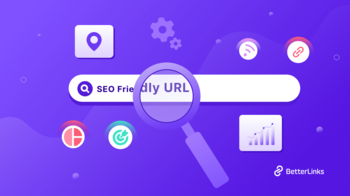URL SEO: How to Create SEO-Friendly URLs

Creating SEO-friendly URLs is an essential aspect of optimizing your website for search engines. A well-structured URL can help search engines understand the content of your page and improve your chances of ranking higher in search results. Here are some tips to help you create SEO-friendly URLs:
1. Use Descriptive and Relevant Keywords: Incorporate descriptive and relevant keywords in your URLs. This helps search engines and users understand what the page is about. For example, instead of using a generic URL like "website.com/page1," use a more specific and keyword-rich URL like "website.com/real-estate-tips."
2. Keep it Short and Concise: Short URLs are easier to read and remember, both for users and search engines. Aim to keep your URLs concise and focused. Avoid using long, complicated URLs that might confuse both search engines and users.
3. Use Hyphens to Separate Words: When including multiple words in your URL, use hyphens to separate them instead of underscores or spaces. Hyphens are more search engine-friendly and help the readability of the URL. For example, use "website.com/real-estate-tips" instead of "website.com/real_estate_tips" or "website.com/RealEstateTips."
4. Avoid Dynamic Parameters: Try to use static URLs instead of dynamic ones that include parameters or query strings. Static URLs, such as "website.com/real-estate-tips," are cleaner and easier to understand for both search engines and users. If dynamic URLs are necessary, consider using URL rewriting techniques to make them more user-friendly.
5. Exclude Stop Words: Stop words are common words like "a," "the," "and," or "of" that add no significant value to the URL. Exclude stop words from your URLs to keep them concise and focused on the most important keywords. For instance, use "website.com/buy-house-guide" instead of "website.com/the-ultimate-guide-to-buying-a-house."
6. Optimize for Readability: Make sure your URLs are easy to read and understand by humans. Use lowercase letters, avoid excessive punctuation or symbols, and structure your URLs logically to convey the hierarchy of your website. Clear and readable URLs are more likely to be clicked on and shared by users.
7. Include Targeted Keywords: Incorporate targeted keywords in your URLs. This can help search engines understand the relevance of the page to specific search queries. However, be cautious not to overuse keywords or make the URL sound unnatural. Balance keyword inclusion with readability.
8. Implement Proper Redirects: If you need to change a URL, make sure to implement proper redirects, such as 301 redirects. This ensures that both users and search engines are directed to the new URL, preserving any existing search engine rankings and avoiding broken links.
9. Consider Localization: If your website targets different countries or languages, consider implementing language or country-specific URLs. This can help search engines understand the intended audience for each page and improve your visibility in local search results.
10. Monitor and Analyze: Regularly monitor and analyze the performance of your URLs in search engine rankings and user behavior metrics. Identify any issues or opportunities for improvement and make adjustments accordingly. Use tools like Google Analytics to track the organic traffic and engagement levels of your URLs.
By following these tips, you can create SEO-friendly URLs that improve your website's visibility in search engine results and enhance the user experience. Remember that SEO is an ongoing process, so regularly review and optimize your URLs as part of your overall website optimization strategy.
Tips to Facebook Ads for Real Estate Business Success

Facebook Ads can be a powerful tool for real estate businesses to reach a targeted audience and generate leads. Here are some tips to maximize your success with Facebook Ads for your real estate business:
1. Define Your Target Audience: Before launching your Facebook Ads, identify your target audience based on location, demographics, interests, and behaviors. Understanding your audience will help you tailor your ads and messaging to resonate with them effectively.
2. Use Eye-Catching Visuals: Real estate is a visual industry, so make sure to use high-quality, eye-catching visuals in your Facebook Ads. Include images or videos that showcase the properties you're promoting in an appealing way. Remember to adhere to Facebook's ad guidelines and use professional imagery.
3. Highlight Unique Selling Points: Differentiate yourself from competitors by highlighting the unique selling points of your properties. Whether it's a stunning view, modern amenities, or a prime location, emphasize these features in your ad copy to attract potential buyers or renters.
4. Craft Compelling Ad Copy: Write engaging ad copy that grabs attention and entices users to click on your ads. Focus on the benefits and value that your properties offer, addressing pain points or desires of your target audience. Keep the copy concise, clear, and persuasive.
5. Utilize Lead Generation Forms: Facebook offers lead generation forms that allow users to submit their contact information directly within the ad. By using these forms, you can capture leads easily and streamline the lead generation process for potential buyers or renters.
6. Implement Retargeting: Set up Facebook's retargeting pixel on your website, which allows you to remarket to users who have previously visited your site or engaged with your content. This strategy can help keep your brand top-of-mind and increase the likelihood of converting leads into buyers or renters.
7. Test Different Ad Formats: Facebook offers various ad formats, such as carousel ads, video ads, and canvas ads. Test different formats to see which ones resonate best with your target audience. Monitor the performance of each ad format and adjust your strategy accordingly.
8. Set Clear Objectives and Track Metrics: Establish clear objectives for your Facebook Ads campaign, whether it's generating leads, increasing website traffic, or raising brand awareness. Use Facebook's ad reporting tools to track key metrics such as click-through rates, conversion rates, and cost per lead. Analyze the data to optimize your campaigns and make data-driven decisions.
9. Experiment with Audience Targeting and Ad Placement: Explore different audience targeting options and placement strategies to find the most effective combinations for your real estate ads. You can target specific locations, interests, or behaviors, and choose to display your ads in the news feed, right column, or Instagram. Continuously monitor and optimize your targeting and ad placement to maximize results.
10. Test and Optimize: Successful Facebook Ads campaigns involve continuous testing and optimization. Experiment with different ad variations, targeting options, and messaging to find what works best for your real estate business. Analyze the data, identify trends, and make adjustments to improve your results over time.
By following these tips, real estate businesses can leverage the power of Facebook Ads to effectively reach their target audience, generate leads, and ultimately drive success in their marketing efforts. Remember to stay up-to-date with Facebook's advertising policies and guidelines to ensure compliance and avoid any ad disapprovals or account issues.
9 B2C Content Marketing Strategies and Examples

B2C content marketing strategies are essential for businesses to engage with individual consumers and create meaningful connections. By implementing varied and effective strategies, companies can effectively communicate their brand message, increase customer engagement, and drive conversions. In this article, we will explore nine impactful B2C content marketing strategies and provide examples to illustrate their application.
One highly effective strategy is blogging, where companies create a dedicated blog to publish informative and engaging articles related to their industry or products. For example, a fashion retailer might share blog posts about the latest fashion trends, styling tips, or outfit ideas. This approach not only establishes the brand as an industry authority but also boosts organic traffic and provides valuable content for potential customers.
Social media campaigns are another powerful B2C content marketing strategy. Leveraging platforms like Instagram, Facebook, and TikTok, companies can create visually appealing and captivating content to engage their target audience. Imagine a food delivery service sharing mouth-watering food photos and recipe videos. Such content can generate buzz, encourage user interaction, and increase brand awareness.
User-generated content (UGC) is a strategy that involves encouraging customers to create and share content featuring a company's products or services. This can be in the form of customer testimonials, product reviews, or social media posts. Starbucks, for example, frequently shares customer-submitted photos on their social media platforms, which not only promotes their products but also engages their loyal customer base.
Influencer collaborations have become increasingly popular in recent years. By partnering with popular influencers whose audience aligns with the brand's target market, companies can reach a large audience and increase brand credibility. Beauty companies often collaborate with makeup artists or beauty influencers who showcase their products in their content, effectively reaching and influencing potential customers.
Video content has also gained tremendous traction in the B2C space. Creating tutorials, product reviews, or behind-the-scenes videos can entertain and educate the audience. GoPro, a brand known for its action cameras, has built an engaged community by sharing thrilling user-generated videos featuring extreme sports and adventures. Video content allows businesses to showcase their products and services in a captivating and visually compelling manner.
Interactive content is an excellent strategy to actively engage consumers. This can include quizzes, polls, or contests that encourage interaction and sharing. Buzzfeed, for instance, frequently creates interactive quizzes that engage readers and provide them with personalized results based on their preferences. This approach encourages participation and creates a fun and interactive brand experience.
Email newsletters remain a valuable B2C content marketing strategy. By sending regular newsletters, companies can stay in touch with customers, provide them with valuable content, exclusive offers, and personalized recommendations. An online retailer, for example, could send personalized product recommendations based on a customer's browsing history and preferences. This not only drives engagement but also helps to nurture customer loyalty.
Infographics are an effective way to present complex information or data in a visually appealing and easily digestible format. Companies can use infographics to illustrate the benefits of a particular skincare ingredient or compare different features of smartphones. This strategy helps simplify information, increase shareability, and enhance brand understanding.
Finally, podcasting has emerged as a popular B2C content marketing strategy. Companies can create audio content in the form of podcasts to engage their audience while they're on the go. Whether covering relevant topics, interviewing industry experts, or providing advice and insights, podcasts enable businesses to connect with their target audience through a unique medium. Serial, a popular true crime podcast, gained a massive following by engaging listeners with its captivating storytelling.
In conclusion, B2C content marketing strategies encompass various approaches to engage individual consumers. By utilizing strategies such as blogging, social media campaigns, user-generated content, influencer collaborations, video content, interactive content, email newsletters, infographics, and podcasting, businesses can create impactful content that resonates with their target audience. It is crucial for companies to continually evaluate and refine their content marketing strategies based on the preferences and feedback of their customers to drive success and achieve their marketing objectives.
How to Create a Google Ads Landing Page That Converts Well?

Creating an effective Google Ads landing page is crucial for maximizing your conversion rate and achieving your marketing goals. Here are some key steps to create a Google Ads landing page that converts well:
1. Define your objective: Clearly identify the specific action you want visitors to take on your landing page, such as making a purchase, filling out a form, or signing up for a newsletter. Having a clear objective helps guide your design and messaging.
2. Keep it relevant: Ensure that the landing page aligns closely with the ad that brought visitors to it. Make sure the headline, images, and content reflect the same messaging and offer as the ad. This ensures a seamless and relevant experience for users and helps maintain their interest.
3. Craft a compelling headline: The headline is the first thing visitors see on your landing page. Make it clear, concise, and attention-grabbing to instantly convey the value proposition and compel users to continue reading.
4. Use persuasive content: Craft persuasive and concise content that highlights the key benefits and features of your offer. Use bullet points, subheadings, and bold text to make important information stand out and enhance readability.
5. Incorporate a strong call-to-action (CTA): The CTA is a key element that encourages visitors to take the desired action. Make it prominent, visually appealing, and clearly state the action you want visitors to take. Use compelling language, such as "Get Started," "Buy Now," or "Sign Up Today."
6. Optimize for mobile devices: With a significant portion of web traffic coming from mobile devices, it's crucial to ensure your landing page is mobile-friendly. Optimize the layout, font size, and load times to provide a seamless experience for mobile users.
7. Use appealing visuals: Include high-quality images or videos that visually represent your offer and capture users' attention. Visuals can significantly enhance the overall aesthetics of your landing page and help communicate your message more effectively.
8. Keep it simple and focused: Avoid cluttered designs and excessive information on your landing page. Maintain a clean and focused layout that directs visitors' attention towards the main message and CTA.
9. Instill trust and credibility: Include trust indicators such as customer testimonials, ratings, and reviews on your landing page to build credibility. Display any relevant certifications, security badges, or partnership logos to instill trust in your visitors.
10. A/B test and optimize: Continuously test different elements of your landing page, such as headlines, visuals, CTAs, and placement of content. A/B testing helps you identify what resonates best with your audience and refine your landing page for better conversions.
11. Track and analyze: Set up conversion tracking and leverage analytics tools to monitor the performance of your landing page. Gather data on click-through rates, bounce rates, and conversion rates to gain insights and make informed optimization decisions.
By following these steps and continuously optimizing your landing page based on user behavior, you can create a Google Ads landing page that effectively converts visitors into customers.
10 Digital Marketing Strategies for Car Dealerships

In today's digital age, staying ahead of the competition requires a strong online presence and strategic marketing efforts. For car dealerships, implementing effective digital marketing strategies can make a significant difference in attracting customers, increasing visibility, and driving sales.
1. Search Engine Optimization (SEO): Optimize your dealership’s website with relevant keywords to rank higher in search engine results. This can lead to increased traffic and higher visibility for your business.
2. Pay-Per-Click Advertising (PPC): Utilize PPC advertising to target specific demographics, locations, and keywords relevant to your dealership. PPC ads appear prominently in search results and can help attract potential customers quickly.
3. Social Media Marketing: Leverage platforms like Facebook, Instagram, and Twitter to promote your dealership, engage with customers, and post images and videos of your vehicles. Facebook's marketplace and ad features can particularly help you reach a wider audience.
4. Content Marketing: Create and distribute relevant content such as blogs, articles, videos, and infographics on your website and social media platforms. This can help position your dealership as a trusted authority in automobile knowledge.
5. Email Marketing: Build an email list and aim to turn leads into customers with engaging newsletters, exclusive deals, and personalized offers.
6. Mobile Marketing: Optimize your website for mobile use as many customers use their smartphones to research before buying a car. Use strategies such as SMS marketing or push notifications to reach potential customers.
7. Video Marketing: Videos can be highly engaging. Create video tours of the cars you offer, customer testimonials, and other promotional content. Post these on platforms such as YouTube, Instagram, and your website.
8. Local SEO: Optimizing for local SEO is crucial for car dealerships. Ensure you've claimed your business on Google My Business and keep the information updated. Encourage satisfied customers to leave reviews on Google to help boost your local relevance.
9. Influencer Marketing: Collaborate with local influencers who align with your target audience. This can increase your visibility, credibility, and reach in the marketplace.
10. Retargeting Campaigns: Use retargeting to re-engage those who've previously shown interest in your website but have not yet made a purchase. You can retarget people with ads on social media platforms or via paid search advertising.
Remember, the effectiveness of digital marketing strategies depends on the careful analysis of your dealership's specific needs, clear goal-setting, and continuous performance monitoring. So always keep checking the metrics to adjust your strategies as needed.
SEO Principles: An Essential Guide for Beginners
.jpg)
SEO, or Search Engine Optimization, is the process of improving a website or webpage’s visibility in the organic (non-paid) results of search engine searches. SEO is an ever-evolving discipline due to changes in search engine algorithms, but certain fundamental principles remain constant. Here's a beginner's guide to the essential SEO principles:
1. Relevant, Quality Content: Content is king in SEO. Write quality, informative content that corresponds to the user's search intent. Content should also be updated periodically as it can become dated over time.
2. Keywords: This is what your content is about, in a nutshell. Select relevant keywords based on your audience's search behavior and incorporate these naturally into your content. Use both short-tail keywords (more generic) and long-tail keywords (more specific).
3. Meta tags: Use appropriate meta tags - title tags, meta descriptions, heading tags - that include your keywords. These tags tell the search engines what your page is about.
4. Mobile-Friendliness: Ensure that your website is mobile-friendly. As more people use smartphones for browsing, search engines favor websites optimized for mobile viewing.
5. Website Speed: Faster websites provide a better user experience and are consequently favored by search engines. Optimize your site for speed by compressing images, using a content delivery network (CDN), and minimizing JavaScript and CSS loading times.
6. Secure Website (HTTPS): Search engines give preference to websites that are secure. An HTTPS website ensures that information between the server and browser is encrypted and safe.
7. User-Friendly URLs: Create simple, user-friendly URLs that include relevant keywords. This can improve the click-through rate and give an indication to the search engines and users about the content of the page.
8. Link Building: Build both inbound and outbound links. Inbound links from high-authority sites tell search engines that your site is trustworthy. Outbound links to reputable sites help search engines understand your content better.
9. Social Signals: Encourage readers to share your content on social media. The more shares, likes, and comments your content has, the higher it will rank. Remember to add share buttons to your site.
10. Technical SEO: This involves creating an XML sitemap for search engines, optimizing robots.txt to control crawling where necessary, and creating a consistent and logical site structure.
11. User Experience (UX): A well-structured, easy-to-navigate website enhances the user experience and will be looked upon favorably by search engines. Bounce rates and time spent on site are both factors considered by search engines.
Remember, patience and consistency are key in SEO. It can take time for your efforts to reflect in search engine rankings. Stay updated on SEO best practices as search engines keep their algorithms updated regularly to provide the best possible search results to users.



